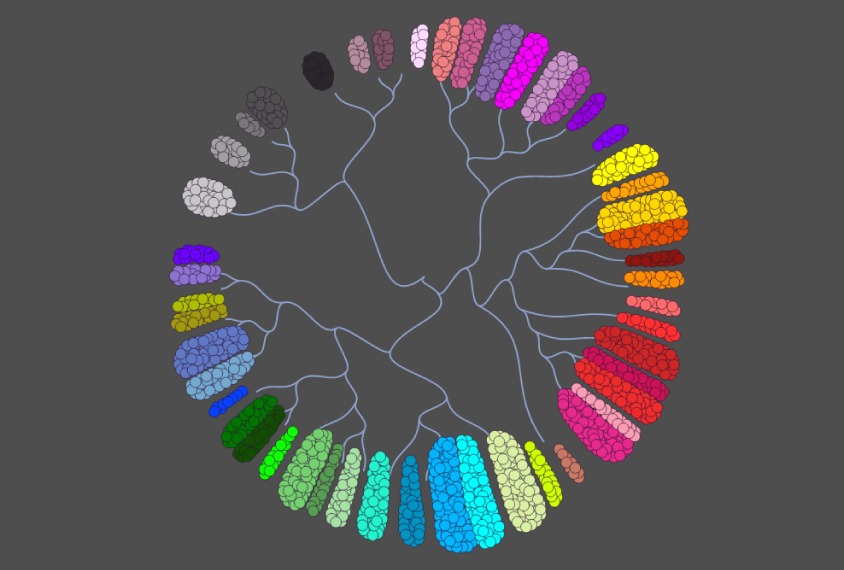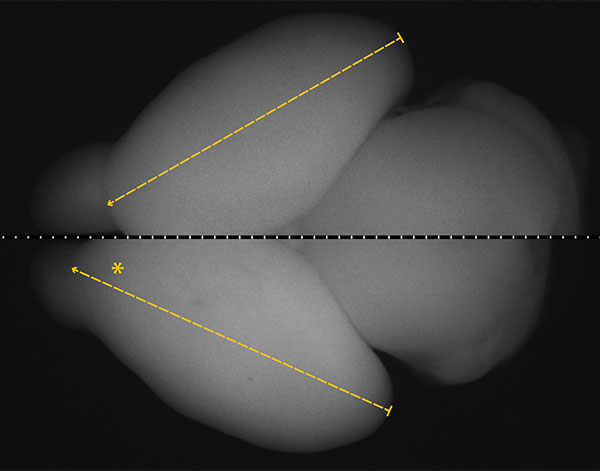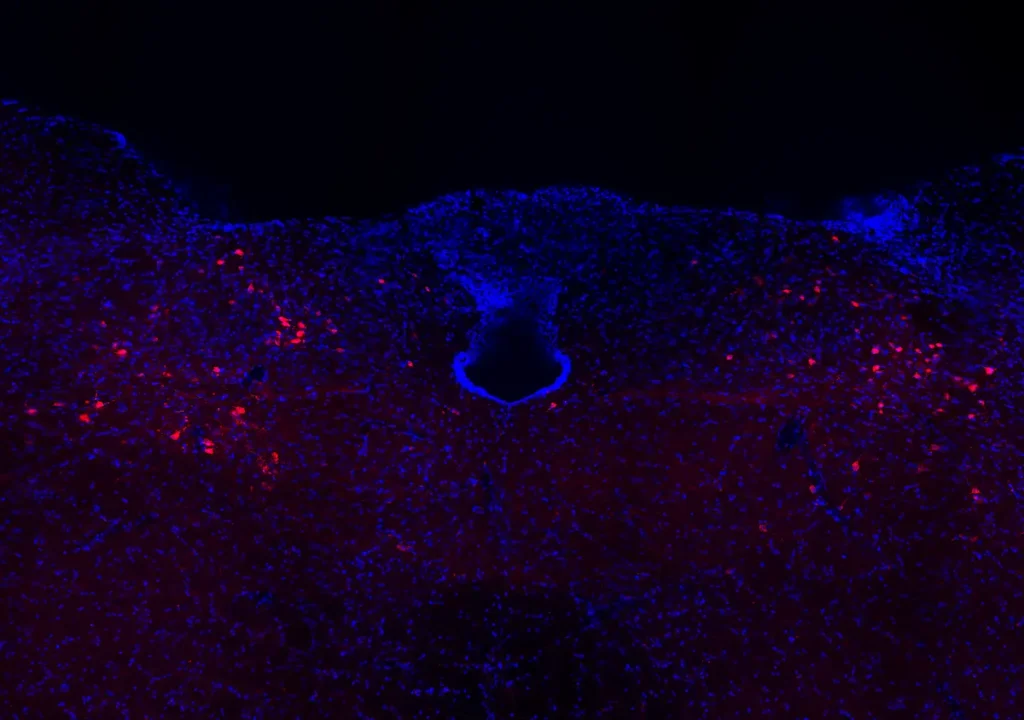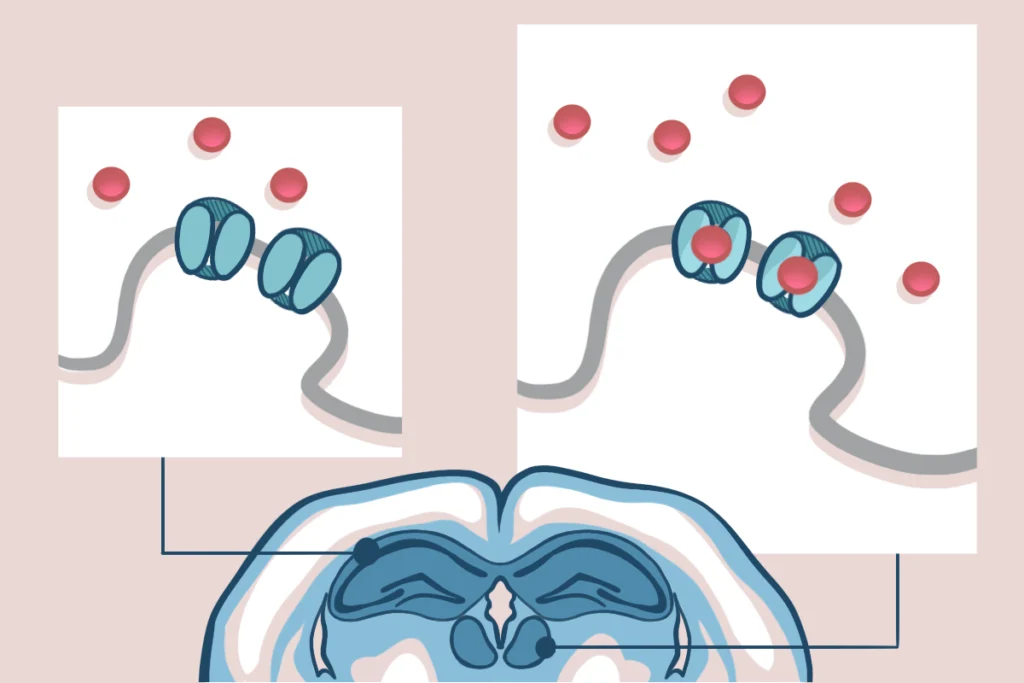Neocortex
Recent articles
Molecular signature may lead to blood test for autism
Researchers have identified a distinctive pattern of gene expression in the white blood cells of young autistic boys.

Molecular signature may lead to blood test for autism
Researchers have identified a distinctive pattern of gene expression in the white blood cells of young autistic boys.
Fathering geeks; GWAS weaknesses; Prozac protection and more
Paternal age drives ‘geek index’ scores, GWAS may have a big weakness, serotonin boosts mouse social behaviors, and what is science Tinder?
Fathering geeks; GWAS weaknesses; Prozac protection and more
Paternal age drives ‘geek index’ scores, GWAS may have a big weakness, serotonin boosts mouse social behaviors, and what is science Tinder?
Sequencing approach bares large variety of brain cell types
Analyzing gene expression in a vision center of the mouse brain has revealed 49 different classes of cells.

Sequencing approach bares large variety of brain cell types
Analyzing gene expression in a vision center of the mouse brain has revealed 49 different classes of cells.
Mathematical model of autism bridges brain, behavior
A mathematical model of the brain’s circuits shows how neurons stuck in overdrive could produce symptoms of autism. The model may reveal how autism-linked behaviors arise from underlying biology.

Mathematical model of autism bridges brain, behavior
A mathematical model of the brain’s circuits shows how neurons stuck in overdrive could produce symptoms of autism. The model may reveal how autism-linked behaviors arise from underlying biology.
Atlas charts gene activity in developing monkey brains
Researchers have for the first time mapped gene expression in the rhesus macaque brain from birth through adulthood. The atlas illuminates the expression patterns of genes likely to be important in autism.

Atlas charts gene activity in developing monkey brains
Researchers have for the first time mapped gene expression in the rhesus macaque brain from birth through adulthood. The atlas illuminates the expression patterns of genes likely to be important in autism.
Spotted: Social cells; brain bulge
A cluster of neurons helps monkeys cooperate, and a human gene makes a mouse brain look like a person's.
Spotted: Social cells; brain bulge
A cluster of neurons helps monkeys cooperate, and a human gene makes a mouse brain look like a person's.
Autism gene guides early neuron development
The little-studied autism gene ANKRD11 helps to package DNA in the nucleus and plays a critical role in the early growth and positioning of neurons.

Autism gene guides early neuron development
The little-studied autism gene ANKRD11 helps to package DNA in the nucleus and plays a critical role in the early growth and positioning of neurons.
New mouse model mimics brain abnormalities in autism
Mice with mutations in the autism-linked gene WDFY3 have enlarged brains reminiscent of those seen in some children with autism, according to a study published 8 September in Nature Communications.

New mouse model mimics brain abnormalities in autism
Mice with mutations in the autism-linked gene WDFY3 have enlarged brains reminiscent of those seen in some children with autism, according to a study published 8 September in Nature Communications.
Molecular mechanisms: Fragile X protein promotes pruning
FMRP, the protein absent or mutated in fragile X syndrome, aids in strategic elimination of neuronal connections during brain development in mice, according to a study published 26 February in The Journal of Neuroscience.

Molecular mechanisms: Fragile X protein promotes pruning
FMRP, the protein absent or mutated in fragile X syndrome, aids in strategic elimination of neuronal connections during brain development in mice, according to a study published 26 February in The Journal of Neuroscience.
Researchers unveil fetal brain map, mouse ‘connectome’
Two new maps of the brain — an atlas of fetal development and a wiring diagram in the mouse — debuted 2 April in Nature. The maps may open new avenues of investigation into the genetic and neurological basis of autism.

Researchers unveil fetal brain map, mouse ‘connectome’
Two new maps of the brain — an atlas of fetal development and a wiring diagram in the mouse — debuted 2 April in Nature. The maps may open new avenues of investigation into the genetic and neurological basis of autism.
Explore more from The Transmitter
Cell population in brainstem coordinates cough, new study shows
The work also adds to a growing body of evidence showing that mice, and their genetic toolbox, can be used to study cough.

Cell population in brainstem coordinates cough, new study shows
The work also adds to a growing body of evidence showing that mice, and their genetic toolbox, can be used to study cough.
In updated U.S. autism bill, Congress calls for funding boost, expanded scope
The current Autism CARES Act sunsets in late September.

In updated U.S. autism bill, Congress calls for funding boost, expanded scope
The current Autism CARES Act sunsets in late September.
Ketamine targets lateral habenula, setting off cascade of antidepressant effects
The drug’s affinity for overactive cells in the “anti-reward” region may help explain its rapid and long-lasting results.

Ketamine targets lateral habenula, setting off cascade of antidepressant effects
The drug’s affinity for overactive cells in the “anti-reward” region may help explain its rapid and long-lasting results.